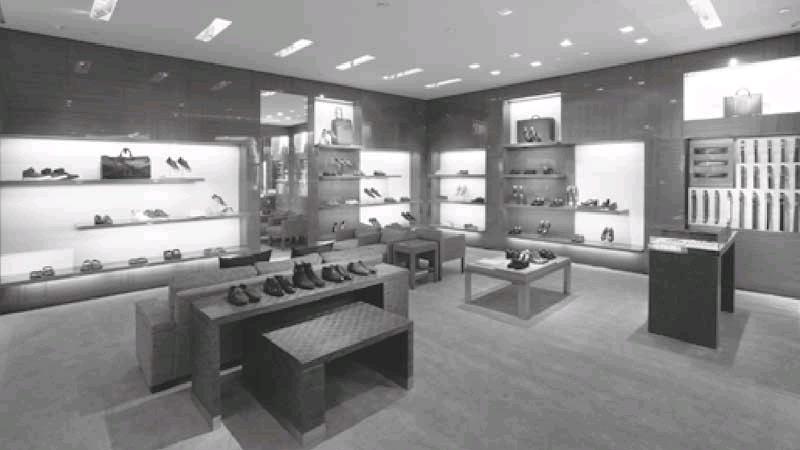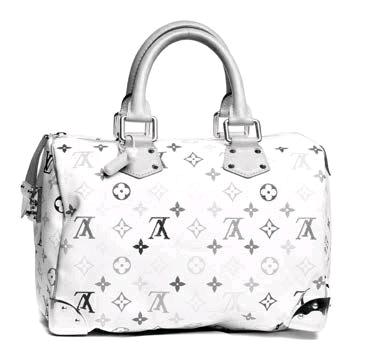Louis Vuitton: Shutting Down Stores in China
2016-05-19
Why close 2 stores in just 1 day?
In the past 20 years, the fashion and luxury goods market have increased their range and depth. From the optimistic point of view, not only rich people, but also the rising middle class eager to buy desirable high-grade goods. Consumer demand always exists.
Previously, it is said that the established luxury brand Louis Vuitton will close 2 chain stores of Shanghai and Shanxi in China, and later this news was officially confirmed by Louis Vuitton China Company.
Relevant person of Louis Vuitton China Company told reporters,“Although Louis Vuitton have closed 2 stores in China, that doesnt mean it will stop the development in China. In 2016, Louis Vuitton will continue to invest and expand in China.”
Open New Stores in 2016
Currently, Louis Vuitton has 4 chain stores in Shanghai: shanghai plaza 66, Still center, Lippo Plaza and Shanghai IFC Mall. The store closed this time is located in Lippo Plaza.
According to public information, Lippo Plaza was established by Lippo Hong Kong China resources co., LTD and Japan Itochu Company. Lippo Plaza is a 38 floor tower in the Luwan District of Shanghai and was completed in 1998.
Lippo Plaza is a first-rate office building in the heart of Shanghai City,China. Thity-eight fioors above ground and 3 floors below,the building was built by the Lippo group,a Chinese financial combine in Indonesia and Hong Kong. The building is served served by 6 escalators and 12 elevators including super high-speed models that travel up to 360 mpm.
Previously, Louis Vuitton closed down three of its Chinese stores, including the one in Guangzhou, the first that was opened in the south, and plans to close down many more throughout the country in the future.
According to a consultant, 20% of Louis Vuitton stores in China will disappear by the middle of this year.
The slowing down of the Chinese economy and the governmental anticorruption policy implemented at the end of 2012 have clearly forced the French fashion label into reviewing its development strategy in the country.
According to expert, there is still a long way to go before the majority of Chinese will be integrated into the middle class.
Apart from the three closures in Guangzhou, Harbin and Urumqi, Louis Vuitton numbers about fifty stores located in smaller cities, where economic growth has slowed down more perceptibly.endprint
Harbin and Shenyang, which were particularly affected, each had two or three stores, and the label recently stated they were envisaging closures in multistore cities.
Louis Vuitton, however, stated that its investment in China continues. The spokesman of the Company told reporters, “Our company entered Chinese market in 1992, and we are one of the earliest luxury brand that Chinese people know. It is quite normal for a brand to shut down or open a store. Therefore, its not necessary to explain.”
Meanwhile, it is revealed that in the second half of 2016, Louis Vuitton will open a new flag store in Zhengzhou as well as introduced Louis Vuitton Foundation in Beijing. The Louis Vuitton Foundation will be located beside Louis Vuitton Beijing store, which will make Louis Vuitton Beijing flag store the biggest store in China.
According to a senior staff of Louis Vuitton Company, in 2014 Louis Vuitton opened 7 new flag stores in Tianjin, Jinan and Xian; in 2015 Louis Vuitton opened 4 new flag stores in Hangzhou, Qingdao and Beijing. He said, “We will continue to invest and expand in China.”
And based on official data, currently, Louis Vuitton has 42 flag stores in 29 cities of China.
The Overall Weakness in the Luxury Industry
The past year was a tough year for the luxury industry.
The biggest problems have come in Asia, where demand has faltered in China and Japan, and collapsed in Hong Kong.
There has been a lot of turmoil and no one has any idea what will happen next.
The value of Swiss watch exports Zenith between January and July, 2015 was CHF12.49 billion ($13 billion), 1.2 per cent below the level reached in the same period in 2014. The figures in July were particularly weak, with watch exports 9.3 per cent lower than the same month last year.
The slowdown is also reflected in the results of Switzerlands two biggest watch groups, Richemont and Swatch. The latter reported in July that its sales rose just 2.2 per cent in the first six months of the year. In May, Richemont said its sales in the first six weeks of its financial year, which runs from April to March, had been flat once currency fluctuations had been taken into account.
The main focus of the luxury industry, however, is Asia. Even before the previous stock market turmoil, the slowdown in Chinese demand was rippling through the region and casting a shadow over the industrys prospects.endprint

In China, there is a close correlation between the value of real assets, such as the stock market, and the purchasing of high-end luxury goods.
As Chinas economy slows down, the luxury industry is experiencing a slump. 2015 China Luxury Report from Daxue Consulting says that Chinas luxury market has been declining in two consecutive years. Data shows that Chinas luxury market size in 2015 was 113 billion yuan, dropping by 2% from last years same period.
The report assumes that watches, mens clothing and bags are the main reasons for the negative growth. The impact of anti-corruption still lasts. In contrary, overseas shopping has developed rapidly in recent years. Chinese consumers overseas tour has increased by 32% from a year earlier. Correspondingly, overseas luxury consumption has grown by 10%, which means consumers have reduced the dependence on purchasing agents.
In fact, from the beginning of the second half of 2015, news constantly spread that many brands close their stores. According to incomplete statistics, Salvatore Ferragamo closed 7 stores in China while HUGO BOSS closed 11 stores.
Pier Luigi, the heir of Italian luxury brand Loro Piana, noticed this phenomenon. He said the financial market volatility may make consumers purchase luxury goods in the short term, as a result of which, the recent condition has made consumers unwilling to spend much money on shopping. It is widely believed that another major reason for continuing market weakness is the price discrepancy between domestic and the overseas markets.
The convenience of traveling abroad and popularity of the Internet prompts Chinese consumers to become smart. Unlike a decade, ago, more and more Chinese alter to consumer abroad rather than interiorly.
The Price Discrepancy between Domestic and the Overseas Markets
According to incomplete statistics, Salvatore Ferragamo closed 7 stores in China while HUGO BOSS closed 11 stores. Pier Luigi, the heir of Italian luxury brand Loro Piana, noticed this result. He said the financial market volatility may make consumers purchase luxury goods in the short term, as a result of which, the recent situation has made consumers unwilling to spend much money on shopping.
It is generally believed that another main reason for continuing market weakness is the price discrepancy between domestic and the overseas markets. The convenience of traveling abroad and popularity of the online shopping prompts Chinese consumers to become smart. Unlike a decade, ago, more and more Chinese consumers choose to shopping abroad rather than at home.endprint
After conducting research on approximately 800 Chinese consumers, researchers found that there was greater variation in the luxury shopping site selection. By the end of 2015, overall overseas luxury shopping has risen by 10%. A great number of consumers flocked to the Japanese market, where spending grew up to 200%. Advantages of the exchange rate and competitive prices also make Korea, Europe and Australia the hot destinations in 2015. In contrast, in 2015, the consumption of the mainland consumers in Hong Kong and Macao decreased by about 25% .
On the other hand, the industry believes that luxury brands focusing on high-end consumers have developed too fast. The decline of these luxury brands is because of the loss of mystery due to overexposure. Good momentum in the early period results in misjudgment. Some new commercial real estate projects in inland cities promise to provide substantial subsidies in order to attract luxury brands. However, most luxury stores attract few consumers. Consequently, with the loss of the subsidy bonus, the tide of stores being closed occurs. Some experts believe that due to the market competition and the devaluation of RMB, the luxury industry is expected to adopt huge price adjustment measures in 2016.
According to official data, sales growth of global luxury goods in 2014 increased 2%, reached to 223 billion euros. The market size is three times as much as 20 years ago. From this point of view, not only rich people, the rising middle class also eager to buy highend goods. Therefore, the consumer demand always exists.
For those worlds well-known brands, they must change their strategy: choose sites more carefully, adjust price discrepancy, focus on core flag storesdevelopment and expand online selling. endprint
endprint
